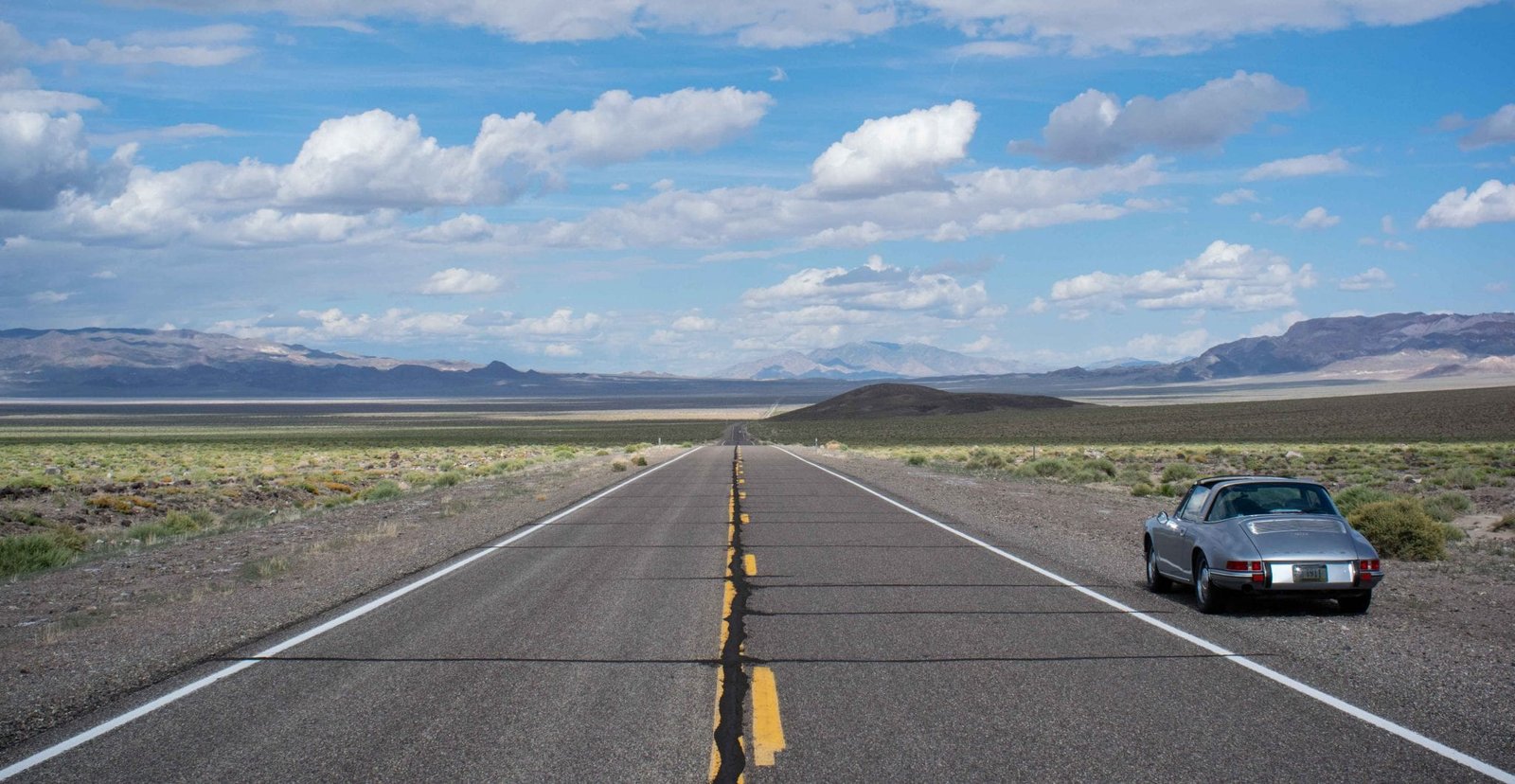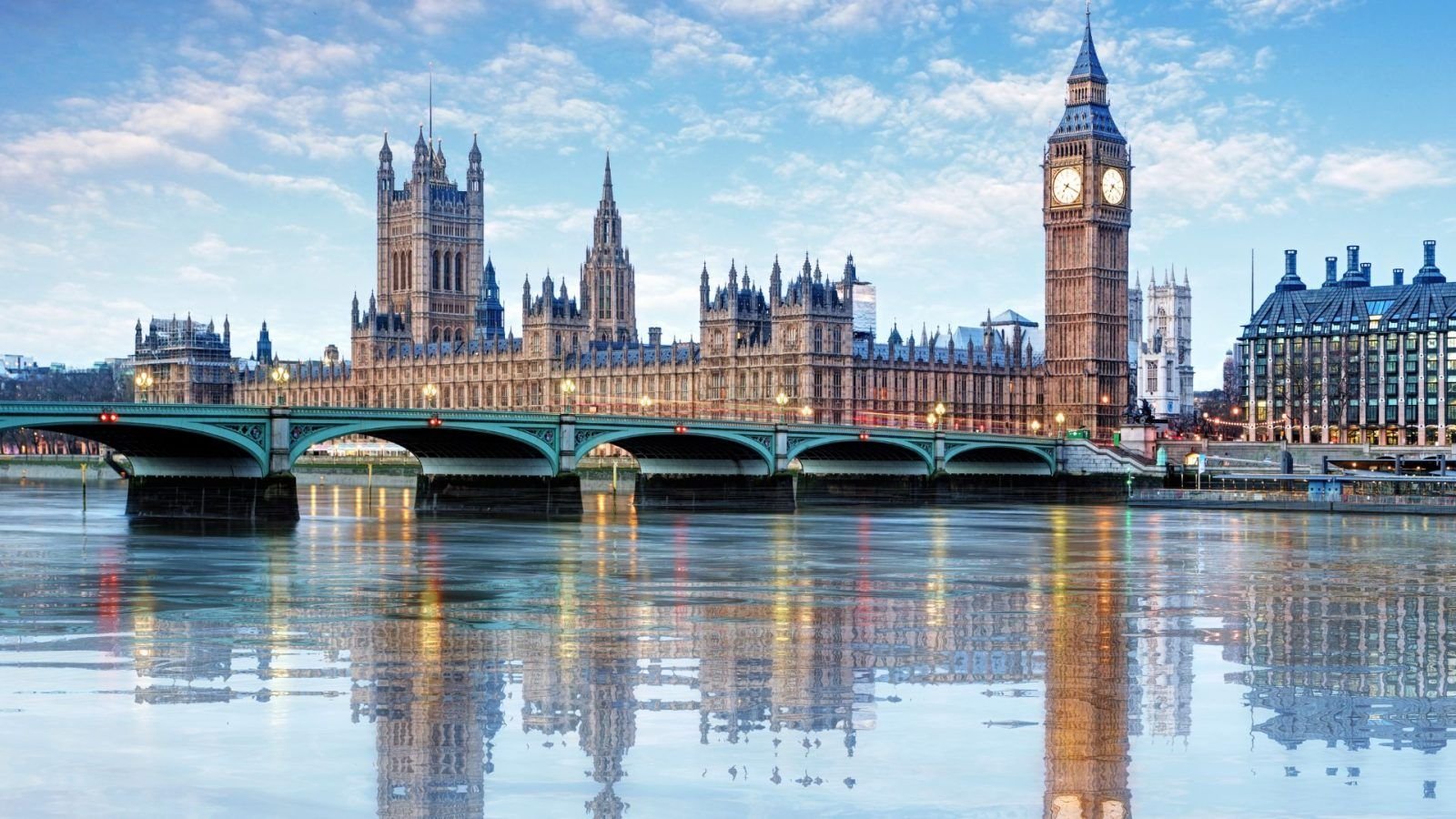Introduction to the Southwest USA
The Southwest USA is a region renowned for its stunning and varied landscapes, making it an exceptional destination for those planning a desert road trip. Spanning across several states, including Arizona, New Mexico, and parts of California and Nevada, this area is characterized by dramatic canyons, expansive deserts, and towering mesas. The varied topography not only provides aesthetically pleasing views but also offers diverse ecosystems that appeal to nature lovers and outdoor enthusiasts alike.
One of the most captivating features of the Southwest is its iconic national parks, such as the Grand Canyon, Zion, and Joshua Tree, each showcasing unique geological formations and rich biodiversity. These parks are not just sites of natural beauty; they also bear significant cultural and historical importance, reflecting the legacy of indigenous tribes and the lasting impact of early settlers. Visitors can engage with this heritage at various cultural sites, providing a deeper understanding of the region’s history and its connection to the land.
Moreover, the Southwest USA is a perfect playground for adventurers seeking to explore its vast wilderness. Opportunities abound for outdoor activities, from hiking and rock climbing to stargazing under some of the clearest skies in the country. The dry climate and wide-open spaces make it particularly inviting for those who enjoy road trips, resulting in an unforgettable travel experience filled with breathtaking vistas and off-the-beaten-path discoveries.
Combining the elements of nature, culture, and adventure, the Southwest USA stands out as a premier destination for a desert road trip. It entices visitors with its unique charm, promising unforgettable memories and a connection to both the earth and the cultural stories that define this captivating region.
Essential Preparations for Your Desert Road Trip
Before setting off on your exciting desert road trip through the Southwest USA, thorough preparations are essential to ensure a safe and enjoyable journey. One of the first steps in this process is ensuring that your vehicle is in optimal condition. This entails conducting a comprehensive inspection that includes checking fluid levels, tires, brakes, and batteries. Given the extreme temperatures often found in desert environments, maintaining proper tire pressure and ensuring your vehicle’s cooling system is functioning effectively are crucial tasks.
Packing the right essentials is equally important for a successful desert road trip. In addition to standard travel gear, include items such as ample water supplies, non-perishable snacks, and a well-stocked first-aid kit. It is also advisable to pack sun protection items like hats, sunglasses, and sunscreen, as prolonged exposure to the sun can lead to sunburn and dehydration. Furthermore, a reliable GPS device or paper maps can be invaluable, particularly in remote areas where cellular service may be limited.
Weather considerations are another significant aspect of your preparations. Desert climates can be unpredictable, with extreme temperature fluctuations from day to night. Researching weather forecasts and planning your travel schedule to avoid the hottest parts of the day will enhance your comfort during the journey. Additionally, being aware of sudden weather changes, including storms or flash floods, is essential for safety. Lastly, familiarize yourself with safety precautions unique to the desert environment; for example, it is important to recognize signs of heat exhaustion and to understand the protocol for handling wildlife encounters.
Day 1: Starting Your Journey – Las Vegas to Zion National Park
The first day of your ultimate Southwest USA road trip sets the stage for an unforgettable adventure, commencing in the vibrant city of Las Vegas. The journey to Zion National Park, approximately 160 miles away, takes roughly 2.5 to 3 hours, providing ample opportunities to experience the beauty of the Nevada and Utah landscapes. As you embark on this road trip, consider making a few notable stops along the way to enhance your travel experience.
Your initial detour may take you to the historical town of Boulder City, where you can explore the Boulder Dam Museum, dedicated to the construction of the iconic Hoover Dam. This landmark, just a short drive from Las Vegas, serves as a pivotal component of the region’s water and power infrastructure. Don’t forget to take a moment to appreciate the scenic views of the dam and Lake Mead.
Continuing your drive, a worthwhile stop is at the Valley of Fire State Park. Known for its stunning red sandstone formations that appear to be ablaze under the sun, this park offers several trails and viewpoints. Take time to trek along the Fire Wave or stalwartly climb to the top of Rainbow Vista for panoramic views that are perfect for photography enthusiasts.
Upon arrival at Zion National Park, immerse yourself in the park’s jaw-dropping scenery and intricate canyon formations. The park is renowned for its towering cliffs and diverse ecosystems. Opt for a leisurely stroll along the Riverside Walk, which leads directly to the entrance of the famed Narrows—an adventurous hike through the Virgin River. Alternatively, you may choose to drive the scenic Zion Canyon Scenic Drive, a must-do for first-time visitors. Feel free to visit the Zion Human History Museum for insightful exhibits about the park’s cultural significance.
This first day lays a solid foundation for your road trip, as you begin to witness the remarkable natural beauty that the Southwest USA has to offer. Take in the unique landscapes as you continue your journey through this scenic American heartland.
Day 2: Zion to Bryce Canyon National Park
On the second day of your desert road trip, the stunning journey from Zion National Park to Bryce Canyon National Park promises to showcase some of the most breathtaking landscapes in the Southwest USA. The distance between these two iconic parks is approximately 85 miles, offering a scenic drive that takes roughly two hours, depending on your chosen stops along the way. As you embark on this route, be sure to take advantage of the numerous viewpoints that reveal the distinctive geology and vibrant colors characteristic of this region.
A notable stop is the Red Canyon, located just outside of Bryce Canyon. This area features striking red rock formations that serve as a perfect introduction to the beauty of Bryce. Take a moment to explore the hiking trails here, such as the Red Canyon Trail, which provides a gentle introduction to the unique hoodoos and rock formations that define the area. This trail meanders through towering pines and stunning canyon walls, making it an excellent choice for those looking to stretch their legs and appreciate the natural wonders surrounding you.
Once you arrive at Bryce Canyon National Park, make your way to the Visitor Center to gather information about the park’s geology and available hiking trails. The park is renowned for its impressive amphitheater, filled with thousands of hoodoos—tall, thin spires of rock formed through the processes of erosion and weathering. The most popular viewpoints include Sunrise Point and Sunset Point, which offer panoramic views across the canyon. For those eager to explore further, the Queen’s Garden and Peek-a-boo Loop trails present excellent hiking opportunities that allow you to experience the park’s striking formations up close.
The combination of scenic overlooks, diverse hiking opportunities, and the remarkable geology of Bryce Canyon creates an unforgettable experience, solidifying the importance of this leg of your Southwest USA journey.
Day 3: Exploring Arches National Park
On Day 3 of your Southwest USA itinerary, you will delve into the stunning landscapes of Arches National Park, renowned for its majestic sandstone arches and extravagant rock formations. The park, established in 1971, is home to over 2,000 natural stone arches, making it a prime destination for nature enthusiasts and photographers alike.
As you enter the park, begin your adventure at the Visitor Center, where you can gather valuable information about the park’s geology, ecology, and safety guidelines. The dedicated staff can provide insight into the best trails tailored to your group’s skill level and time availability. For a comfortable and engaging experience, it is advisable to arrive early in the morning to avoid both crowds and the midday heat.
One of the quintessential trails in Arches is the Delicate Arch Trail. This moderate 3-mile hike leads you to the park’s most famous arch, offering an iconic photo opportunity that should not be missed. With its breathtaking backdrop, the arch is particularly mesmerizing at sunset, so consider timing your visit to capture its beauty during those golden hours.
For a less strenuous option, the Windows Section features accessible trails leading to several impressive arches, including North Window, South Window, and Turret Arch. This area can be easily explored within a couple of hours, making it an ideal stop for families or those short on time. Additionally, the brief hike can reveal stunning vistas that encapsulate the raw beauty of the Southwestern landscape.
Finally, as you navigate Arches National Park, ensure you carry ample water and wear sturdy hiking shoes, as conditions can vary throughout the trails. Following these tips will enhance your visit and allow you to fully appreciate the breathtaking scenery that Arches has to offer. With its unique features and accessible trails, Arches National Park remains a highlight of any Southwest USA itinerary.
Day 4: Discovering Monument Valley
On the fourth day of your southwestern USA road trip, a visit to Monument Valley is a must. This iconic landscape, renowned for its towering sandstone buttes and breathtaking panoramas, holds significant cultural and historical importance, especially for the Navajo Nation. The region’s stunning sceneries have been depicted in numerous films, earning it a prominent place in American cinematic history. However, beyond its visual appeal, it serves as a living testament to the heritage and traditions of Native American tribes.
Upon arrival at Monument Valley, you may consider joining a guided tour led by a Navajo guide. These tours offer insight into the area’s cultural background, allowing visitors to experience it through the lens of those who hold it sacred. Additionally, the guides share stories and legends passed down through generations, enriching your understanding of the significance of this unique enclave. Various tour options are available, ranging from Jeep tours and horseback riding to sunrise or sunset excursions that capture the captivating beauty of the valley at different times of the day.
For those who prefer self-exploration, the Monument Valley Tribal Park provides a well-marked scenic drive that allows you to navigate the area at your own pace. The scenic loop showcases some of the most stunning vistas, allowing photographers and nature enthusiasts ample opportunity to capture the grandeur of the striking formations, including the famous Mittens and Merrick Butte. For an optimal experience, plan for at least a few hours, as each viewpoint offers unique perspectives and breathtaking views.
In conclusion, a day spent discovering Monument Valley is not only about appreciating its natural beauty but also understanding its cultural significance to Native American tribes. Whether through guided tours or self-exploration, the essence of this majestic landscape will undoubtedly leave a lasting impression on your desert road trip.
Day 5: The Splendor of the Grand Canyon
On the fifth day of your southwest USA itinerary, you will immerse yourself in the breathtaking beauty of the Grand Canyon, one of the foremost natural wonders of the world. This magnificent destination offers various viewpoints where visitors can marvel at the vast expanse of the canyon. The South Rim is the most accessible area, featuring iconic overlooks such as Mather Point, Yavapai Point, and the Grand Canyon Village. Each spot provides a unique perspective of the intricate layers of rock and vibrant colors, particularly during sunrise and sunset.
For those seeking adventure, the Grand Canyon presents numerous outdoor activities. Hiking is a popular option, with well-maintained trails ranging from leisurely walks to challenging excursions. The Bright Angel Trail is a favored choice, offering stunning vistas and diverse geological features along the way. If you are feeling adventurous, consider tackling the more strenuous South Kaibab Trail, which showcases dramatic views but requires good physical fitness and preparation.
Additionally, the Grand Canyon provides opportunities for thrilling rafting adventures on the Colorado River. Rafting trips, available through various tour operators, allow participants to navigate the river’s rapids while absorbing the stunning canyon walls that rise on either side. Whether you are a beginner or an experienced rafter, these excursions cater to all skill levels.
To enhance your overall experience, it is advisable to arrive early to avoid crowds and secure a prime location for viewing. Consider dedicating time to visit the Grand Canyon Visitor Center to gain insights into the park’s geology, history, and ecology. This knowledge adds another layer of appreciation as you explore the majestic landscape around you. The Grand Canyon undoubtedly encapsulates the essence of the southwestern United States, creating lasting memories for all who visit.
Day 6: Sedona’s Red Rocks and Art Scene
On day six of your desert road trip through the Southwest USA, the stunning destination of Sedona awaits, offering a unique combination of natural beauty, artistic expression, and wellness culture. Known for its iconic red rock formations, Sedona has established itself as a haven for outdoor enthusiasts and art lovers alike. Embark on your day by delving into the outdoor activities that Sedona has to offer. Hiking trails such as the Cathedral Rock Trail and the Bell Rock Loop provide immersive experiences amidst breathtaking landscapes. These trails vary in difficulty, catering to both novice and experienced hikers, ensuring everyone can enjoy Sedona’s captivating scenery.
For those seeking a bit more adventure, Sedona is also renowned for its mountain biking trails. The Red Rock Pathway and the A.T. Loop are popular choices that wind through the spectacular landscapes, allowing cyclists to experience the awe-inspiring views that have made Sedona a premier destination for outdoor sports. After a day filled with exploration, the vibrant art scene in Sedona beckons. The town is home to numerous galleries showcasing local artists and their works, often inspired by the dramatic surroundings. The Tlaquepaque Arts & Shopping Village, a picturesque outdoor plaza, is among the must-visit locations, featuring a range of art galleries, shops, and restaurants.
Indulge in local culinary delights by dining at one of Sedona’s many eateries that incorporate fresh, locally sourced ingredients. Whether you prefer a casual café or fine dining, options abound to satisfy every palate. Sedona’s wellness culture extends further, with numerous spas and wellness centers offering treatments and therapies to enhance relaxation and rejuvenation during your visit. As the day comes to a close, take a moment to appreciate the magnificent sunset over the red rocks, a sight that encapsulates the natural beauty of this unique Southwest gem.
Tips for Traveling Responsibly in the Desert
Traveling in desert ecosystems requires a heightened sense of responsibility to ensure the protection of these unique environments. Adhering to the Leave No Trace principles is essential for these regions, where delicate habitats are incredibly susceptible to damage. Visitors should always pack out their trash, stay on designated trails, and avoid disturbing vegetation. By minimizing impact, travelers help maintain the natural beauty and ecological integrity essential to these thriving desert ecosystems.
Wildlife in the desert can be fragile, and it is crucial to observe them from a distance. Avoid feeding animals or leaving food scraps, as this can disrupt their natural foraging behaviors and contribute to dependency on human food sources. Additionally, be mindful of breeding seasons and nesting sites to prevent unintentional disturbance. Respecting wildlife not only protects species but ensures that visitors can have enriching experiences observing animals in their natural habitat.
Visitors to desert regions must also honor Indigenous cultures and histories. Many desert areas are home to Indigenous communities who have lived sustainably within these ecosystems for generations. When exploring, it is vital to respect local customs, heed guidelines when visiting sacred sites, and support local artists and businesses. Engaging meaningfully with Indigenous cultures fosters understanding and helps to preserve rich traditions that have long been connected to the land.
Lastly, adopting sustainable practices during your travels in the desert can significantly mitigate environmental impact. Opt for reusable water bottles and utensils, and choose eco-friendly products whenever possible. Using solar-powered chargers and minimizing disposable items contributes to a more sustainable road trip experience. By adopting these practices, travelers can enjoy the magnificence of the desert while preserving it for future generations.
Wrap-Up: Creating Lasting Memories from Your Desert Adventure
As our journey through the stunning landscapes of the Southwest USA comes to a close, it is important to reflect on the diverse experiences that this unique region offers. A desert road trip provides not only breathtaking scenery but also unforgettable memories that enrich the spirit of adventure. From the towering red rock formations of Arizona to the expansive vistas of New Mexico’s deserts, each destination contributes its distinct character to the overall narrative of your trip. Such an experience invites travelers to connect with nature and fosters a sense of exploration that goes beyond the landmarks themselves.
Throughout this itinerary, adventure seekers have the opportunity to engage with a variety of activities, whether it’s hiking through magnificent canyons, stargazing in the clear night sky, or immersing oneself in the rich cultural heritage of Native American tribes. Each stop along the route can reveal something new and unforgettable. It’s this diversity that makes the Southwest USA a must-visit for anyone seeking an enriching road trip experience.
We encourage you to document your own desert road trip adventure. Share your travel stories, tips, and photos, as they contribute to a vibrant community of fellow road trippers. By exchanging insights and experiences, we can inspire one another to explore further and create our unique memories. Remember, every journey tells a story, and your contributions can help others prepare for their own adventures in the desert.
In conclusion, the memories forged during a Southwest USA road trip are invaluable treasures that remain long after the journey ends. Each experience serves as a reminder of the beauty that exists in our world and the connections we make while exploring it. Happy travels, and may your next adventure be as memorable as the landscapes you traverse!









